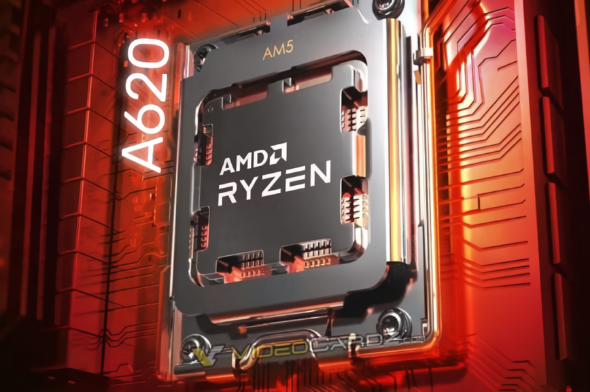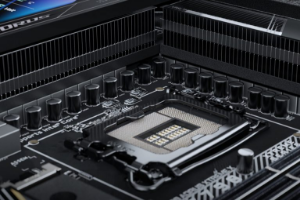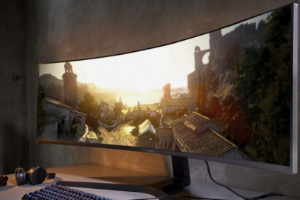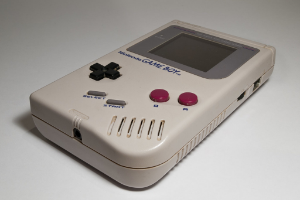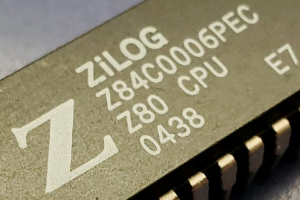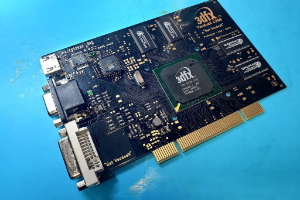Connection to DriversCloudCreate a DriversCloud.com accountReset your DriversCloud.com passwordAccount migration
AMD A620: motherboards for Ryzen 7000 at less than 120 euros and "hidden" features
As an entry-level chip, the A620 seems to be able to access certain functions normally reserved for larger models.
While the extra cost of the AM5 platform is a real thorn in the side of the Ryzen 7000 - logically limiting its adoption by the public while Intel has been aggressive on the prices of its 13th generation Core - AMD had a third chipset up its sleeve. Mentioned for the first time only a few days ago, the A620 chipset is a bit of a shock for the American company, which is also releasing a new 3D Vertical Cache processor, the Ryzen 7 7800X3D. As interesting as it is, this processor is actually stealing the limelight from the numerous motherboards announced at the same time as the chipset's official release.
Published by AMD, the table above shows the technical differences between the three ranges - and six models - of AM5 chipsets. The X670/X670E duo is the most advanced, aimed at the high-end. Then there are the B650/B650E, whose features are a little more limited, but still retain most of the new features of the AM5 platform. Finally, the A620 is the only one that does not use PCI Express Gen 5 for either the graphics card or the NVMe storage. Moreover, the overclocking of Ryzen processors is blocked here and you have to make a cross on the USB 3.2 Gen 2×2 ports (20 Gbps). AMD presents the beast in these terms:
" Today, AMD announced its new A620 chipset, allowing users to access the power of Ryzen 7000 Series processors with the features and performance of the AM5 platform and starting at $85 USD. The AMD A620 chipset will be available starting March 31 and will provide a reliable and optimized platform with a variety of connectivity and bandwidth options. This includes support for DDR5 memory, AMD EXPO technology, one-click memory overclocking and up to 32 PCIe 4.0 lanes to meet the demands of the most demanding users, whether in the office or at home."
Motherboard manufacturers have been quick to jump on the bandwagon, and without going into detail about all the models already confirmed, let's take a quick look at them. At ASRock, there is without surprise the confirmation of the A620M-HDV/M.2 which was among the first to be leaked in recent days. ASUS is probably the most "ambitious" since its A620 motherboards will be priced between 149 and 169 euros: a relatively high range that brings its products dangerously close to B650-based motherboards. Three models have already been announced: TUF Gaming A620M Plus WiFi, TUF Gaming A620M Plus and Prime A620M-A.
Compared to the majority of its competitors, ASUS has the advantage of integrating four DIMM slots for DDR5 when the others are content with two. Only Gigabyte follows ASUS' lead with its A620M Gaming X AX and A620M Gaming X models. Both Biostar and MSI are closer to ASRock than ASUS with simpler, but also less expensive motherboards. The Biostar A620MP-E Pro is perhaps the simplest of all with two DDR5 DIMM ports, but also a single M.2 port and no integrated Wi-Fi, which can be added via an M.2 E port. Finally, MSI is not very talkative. Three cards are planned and if the modern features are limited in number (two DDR5 DIMMs, two PCIe x16 + x1, one M.2), it is amusing to see that MSI has resurrected the VGA port, the PS/2 connectors and the RJ45 1 GbE network.
Besides the manufacturers' announcements, it is interesting to see that the official specifications can be "outdated". The WCCFTech website uses the example of the ASRock A620M PRO RS motherboard, whose M.2 connector for NVMe SSDs should logically be limited to PCIe Gen 4. However, WCCFTech connected a PCIe Gen 5 SSD that was recognized as such and provided performance that could not be achieved by a PCIe Gen 4 model: about 10 GB/s in sequential read. Perhaps even more surprising is the activation of the Precision Boost Overdrive on the ASUS PRIME A620M-A.
Why more surprising? Because this feature allows the overclocking of Ryzen 7000 processors, which is probably the most important difference between the X670/X670E and B650/B650E chipsets on the one hand and the A620 on the other. The MyDrivers website confirms however - with screenshots - the possibility to overclock the Ryzen 9 7900 with this "small" ASUS motherboard. Without going into endless details, MyDrivers underlines that after a quick overclocking, the processor gained up to 9% performance on the Cinebench R23 measurement tool. Now let's wait for AMD's reaction to these few outbursts.
